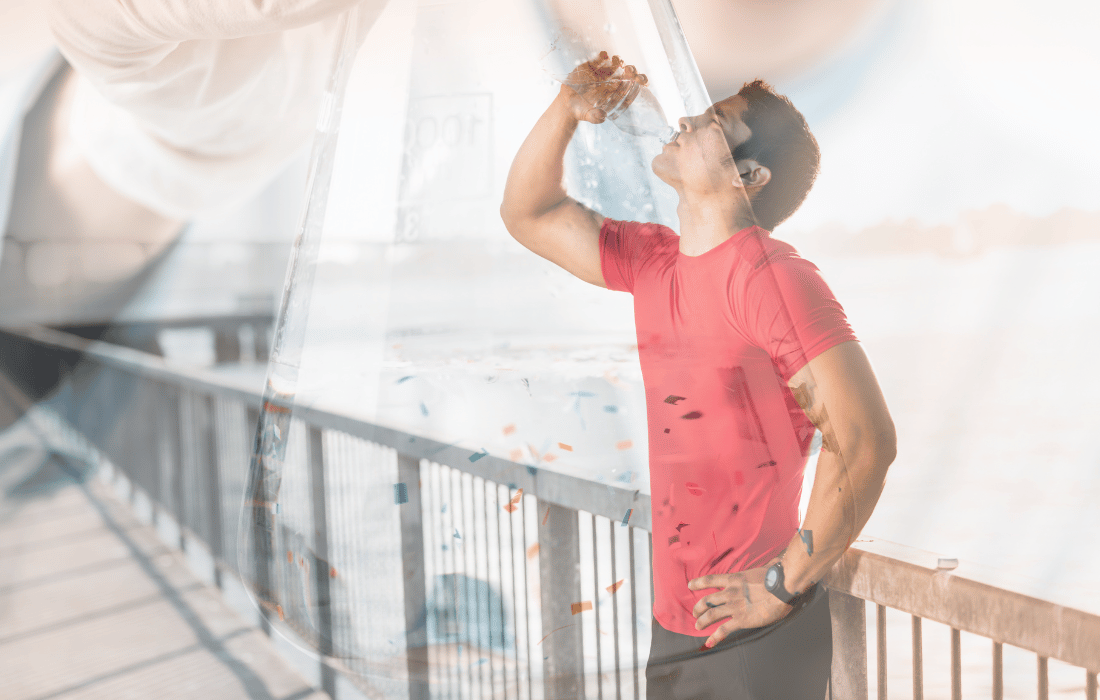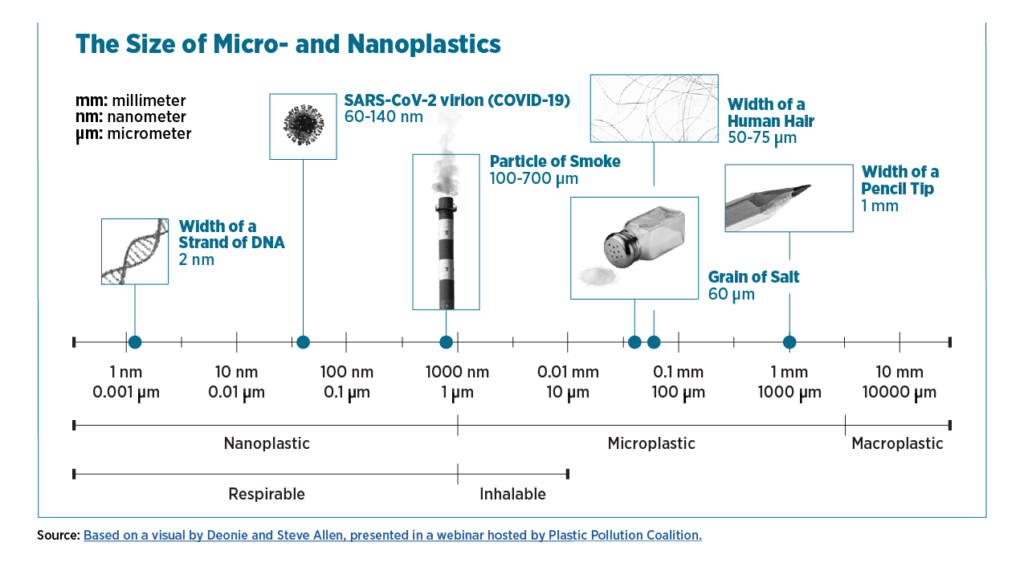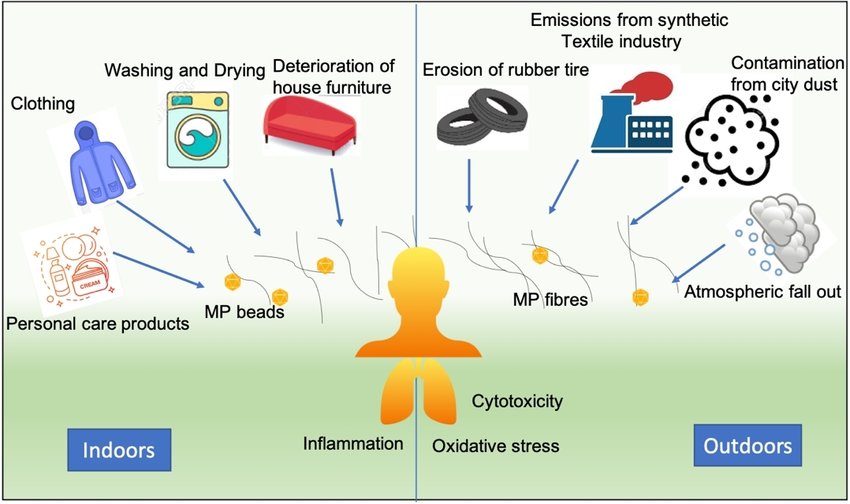In recent years, the conversation around microplastics has gone from a niche environmental concern to a hot topic in health, science, and even sports. And for good reason—these tiny particles are everywhere, infiltrating our food, water, air, and even our bodies. While this issue affects everyone, athletes may be at the greatest risk due to the very nature of their training and competition routines.
Think about it: polyester athletic wear dominates the industry, shedding microplastics with every use and wash. Single-use plastic water bottles are practically synonymous with sporting events and training sessions. Packaged supplements and energy bars? Often wrapped in plastic that may leach microplastics. Athletes, who already face heightened physical demands, could unknowingly be exposing themselves to significant health risks that undermine their hard work and dedication.
As microplastics take center stage in public health discussions, it’s time to look at their impact on athletic performance and recovery. For athletes striving for peak health, understanding and addressing this invisible enemy is no longer optional—it’s essential.
What Are Microplastics and How Do They Form?
Microplastics are plastic fragments or particles measuring less than 5 millimeters. They are classified into two main categories:
Primary Microplastics: These are manufactured intentionally for specific purposes, such as microbeads in cosmetics, industrial abrasives, and additives in paints and coatings. Synthetic fibers from clothing and textiles are also significant contributors.
Secondary Microplastics: These result from the breakdown of larger plastic items, such as water bottles, bags, and fishing nets, due to environmental exposure to sunlight, wind, and water. Over time, these items degrade into smaller particles that enter ecosystems.
Microplastics are a global pollutant, found in oceans, rivers, soil, and even the atmosphere. Their widespread presence means they are now part of the human experience, with studies detecting microplastics in blood, placentas, organs, and stool samples.
How Microplastics Enter the Human Body
Athletes face unique exposure risks to microplastics due to the nature of their activities, diets, and environments. The three primary pathways of exposure are inhalation, ingestion, and dermal absorption.
1. Inhalation
Airborne microplastics are present in urban areas, gyms, and indoor facilities. These particles are released from synthetic materials, industrial processes, and household dust. Athletes, who breathe more deeply and frequently during exercise, are at an increased risk of inhaling these particles. High-traffic indoor training facilities, synthetic turf fields, and poorly ventilated gyms exacerbate this exposure.
2. Ingestion
Contaminated food and water are significant sources of microplastics. Studies have revealed that bottled water contains up to 22 times more microplastics than tap water. Athletes consuming large volumes of water and supplements packaged in plastic containers may ingest substantial quantities of these particles. Seafood, processed foods, and even table salt are other common sources.
3. Dermal Absorption
Microplastics can enter the body through the skin, particularly when sweating during intense activity. Synthetic athletic wear, including polyester and nylon garments, sheds microfibers during use and washing. Prolonged exposure to sweat and increased blood circulation may enhance the absorption of these particles through the skin.
Top Sources of Microplastics in an Athlete’s Environment
Microplastics are virtually unavoidable in modern life, but some sources are more significant than others—especially for athletes. Understanding these primary contributors can help identify ways to reduce exposure and minimize their impact.
1. Synthetic Athletic Wear
Polyester, nylon, and other synthetic fabrics dominate athletic apparel because of their durability, flexibility, and moisture-wicking properties. However, these materials are one of the leading sources of microplastic pollution.
- During Wear: Friction caused by movement can release microfibers directly into the air or onto the skin.
- During Washing: Each load of synthetic clothing sheds thousands of microfibers, which are small enough to pass through wastewater treatment plants and enter the water supply.
2. Bottled Water and Sports Drinks
Plastic water bottles, a staple at training sessions and competitions, are a major source of microplastic ingestion. Studies have found that bottled water contains significantly more microplastics than tap water, likely due to the degradation of the plastic over time or during production.
- Reusable Plastics: Even reusable plastic bottles degrade with regular use, especially when exposed to heat, releasing microplastics into the water.
3. Food and Supplements
Athletes often rely on pre-packaged snacks, meal replacements, and supplements for convenience. However, these products are frequently stored in plastic packaging that can leach microplastics, especially when exposed to heat or prolonged storage.
- Seafood: Shellfish and fish, which are common in high-protein diets, often contain microplastics due to pollution in marine environments.
- Salt: Table salt, including sea salt and rock salt, is another unexpected but proven source of microplastic contamination.
4. Synthetic Sports Equipment
From yoga mats to turf fields, synthetic materials in sports equipment can release microplastics into the environment.
- Artificial Turf: Commonly used for soccer, football, and other sports, artificial turf sheds plastic granules over time. These granules can be inhaled, absorbed through the skin, or carried into nearby water sources.
- Foam Equipment: Items like foam rollers and mats, often used for recovery or stretching, may release microplastics as they degrade.
5. Indoor and Outdoor Air
Athletes who train in urban areas or enclosed spaces are exposed to airborne microplastics. These particles come from various sources, including:
- Household Dust: A significant portion of indoor dust consists of microplastics from synthetic materials.
- Traffic and Industrial Pollution: Urban environments expose athletes to microplastics from tire wear, vehicle emissions, and industrial activities.
6. Personal Care and Hygiene Products
Microplastics are common in personal care products like exfoliating scrubs, toothpaste, and shampoos. While many countries have banned microbeads, legacy products, and other plastic-based ingredients still contribute to contamination.
7. Tea Bags
Many tea bags are made from, or reinforced with, plastic materials. When steeped in hot water, these bags can release billions of microplastic particles into the tea. For athletes relying on tea for hydration or recovery, this source can be a hidden contributor to microplastic exposure.
8. Plastic Cutting Boards
Plastic cutting boards, a common kitchen staple, release microplastics during regular use. The friction caused by chopping, slicing, or dicing food creates tiny plastic particles that can contaminate meals. This is particularly concerning for athletes who focus on preparing nutrient-dense meals at home.
How Microplastics Impact Athletic Health and Performance
Microplastics are not harmless. They act as carriers for toxic chemicals, such as heavy metals, bisphenols, and phthalates, which can disrupt biological systems and accumulate in tissues. For athletes, this presents a range of risks that directly affect performance and recovery.
Gut Health: The Foundation of Athletic Performance
The gut is often referred to as the “second brain,” and its role in digestion, immunity, and energy metabolism is critical for athletes. Microplastics disrupt gut health in several ways:
- Physical Damage: Microplastics physically irritate and damage the gut lining, leading to inflammation and “leaky gut syndrome”. This allows harmful substances to enter the bloodstream, triggering systemic inflammation that can hinder muscle recovery and immune function.
- Microbiome Disruption: The gut microbiome, a diverse ecosystem of beneficial bacteria, plays a crucial role in nutrient absorption and overall health. Microplastics disrupt this balance, reducing the availability of key nutrients needed for energy production and repair.
For athletes, compromised gut health can lead to fatigue, slower recovery times, and increased susceptibility to infections.
Hormonal Disruption: A Threat to Performance
Microplastics often carry endocrine-disrupting chemicals (EDCs) like BPA and phthalates. These chemicals mimic or block hormones, leading to imbalances that directly affect athletic performance. Key concerns include:
- Reduced Testosterone: Testosterone is essential for muscle growth, strength, and recovery. EDCs have been shown to decrease testosterone levels, particularly in men, undermining progress in strength training and recovery.
- Elevated Cortisol: Cortisol, the stress hormone, is often elevated in athletes due to intense training. EDCs can further increase cortisol levels, impairing sleep, recovery, and muscle repair.
Cognitive Function: The Brain-Body Connection
Emerging research indicates that microplastics can cross the blood-brain barrier, a protective shield that prevents harmful substances from entering the brain. Once inside, these particles can cause neuroinflammation and oxidative stress, leading to cognitive impairments. Athletes who rely on quick decision-making, focus, and reaction time—such as MMA fighters and motorsport racers—are particularly vulnerable to these effects.
Cellular and Mitochondrial Damage
Microplastics induce oxidative stress at the cellular level, damaging mitochondria—the energy powerhouses of cells. Mitochondrial dysfunction results in reduced energy production, increased fatigue, and slower recovery times. Additionally, microplastics have been detected in bone marrow, disrupting the production of red and white blood cells. This affects oxygen delivery to muscles and compromises immune defense, critical factors for endurance and overall performance.
Chronic Inflammation: The Hidden Burden
Inflammation is a natural response to physical activity, but chronic inflammation is detrimental to athletic performance and recovery. Microplastics trigger systemic inflammation by activating the immune system, delaying muscle repair, increasing the risk of overuse injuries, and impairing recovery. Over time, chronic inflammation can lead to overtraining syndrome and reduced performance.
Practical Steps for Athletes to Reduce Microplastic Exposure
Although eliminating microplastic exposure entirely is impossible, athletes can take proactive steps to minimize intake and mitigate their effects.
Filter Drinking Water
Invest in high-quality water filtration systems, such as a reverse osmosis system, to remove microplastics from drinking water. Avoid bottled water, which is a significant source of microplastics.
Use Probiotics to Support Gut Health
Emerging research highlights the ability of specific probiotic strains to bind to microplastics in the gastrointestinal tract, reducing their absorption and promoting their excretion. Strains such as Lactobacillus plantarum, Bifidobacterium bifium, and Bifidobacterium longum have shown promise in mitigating microplastic-induced toxicity, improving gut barrier integrity, and reducing inflammation.
Athletes can include probiotic-rich foods like yogurt, kefir, sauerkraut, and miso in their diet or consider high-quality probiotic supplements with proven strains for added support.
Optimize Athletic Apparel
Choose natural fibers like organic cotton, bamboo, or wool for athletic wear. Wash synthetic clothing sparingly and use laundry bags or filters designed to capture microfibers during washing.
Improve Air Quality
Use HEPA air purifiers in training facilities and homes to reduce airborne microplastic particles. Regular cleaning and proper ventilation further minimize exposure.
Support Detoxification
Support the body’s natural detoxification processes through hydration, regular physical activity, and sweating via saunas or exercise. Supplements like activated charcoal, chlorella, and spirulina may assist in binding and removing toxins, but they should be used under professional guidance.
Conclusion: Microplastics and the Future of Athletic Health
Microplastics represent a silent yet formidable challenge for athletes. From disrupting gut health and hormonal balance to impairing cognitive function and cellular repair, their effects are far-reaching and insidious. By taking steps to reduce exposure and support the body’s defenses, athletes can mitigate the risks and continue to excel in their pursuits. Protecting against microplastics is not just about individual health—it’s about ensuring the longevity and integrity of athletic performance in a rapidly changing world.









